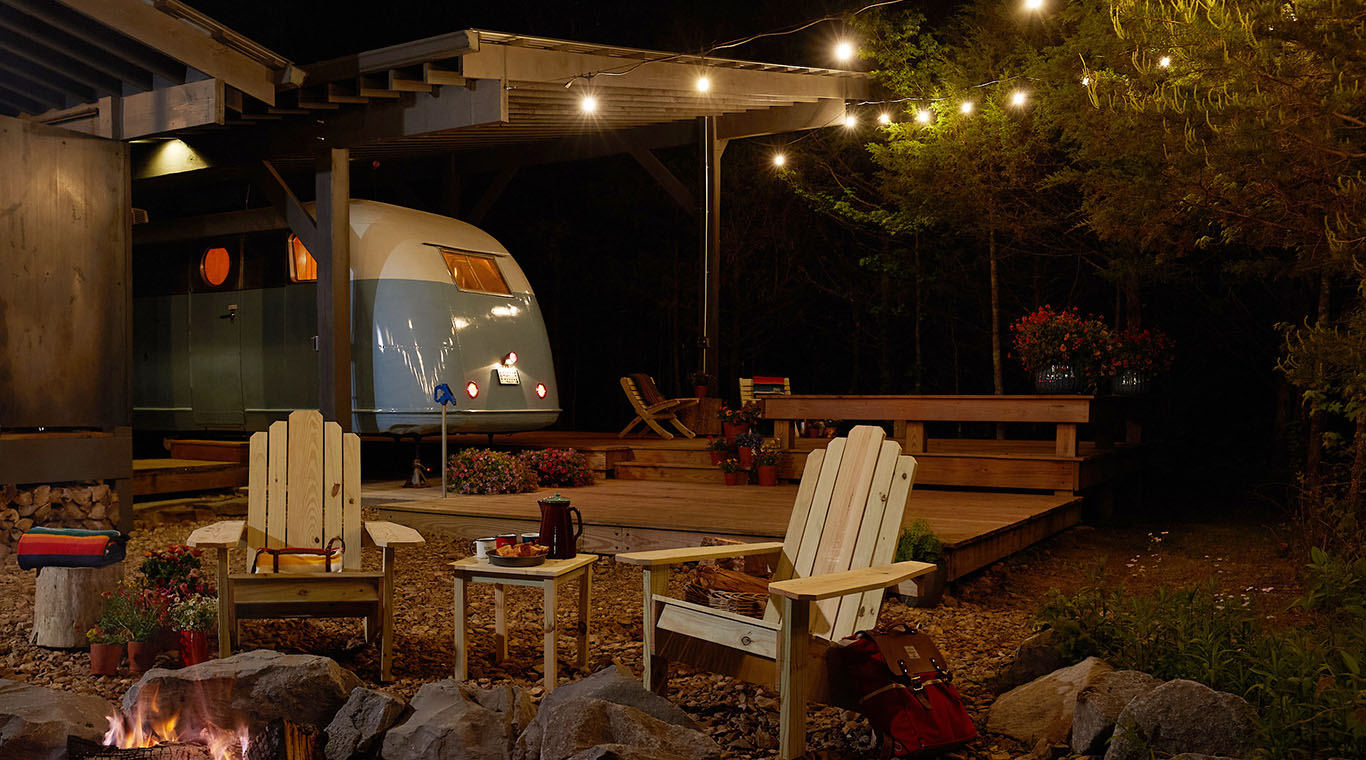
Lights Done Right
The One for the Job
Who you use all depends on your needs. If you just want to light the deck steps or use the grill in the evening, then an electrician is probably the right call. For something more creative, however, an outdoor lighting designer can be a good investment. The best designers can transform a property into a nighttime work of art.
Hiding Light
The most important thing a good designer brings is the ability to create a lighting scheme that doesn’t call attention to itself. “When we do a nice job, people don’t notice the lighting,” says Brook Tafel of Outdoor Lighting Perspectives (OLP). When highlighting a tree, you shouldn’t notice where it comes from. And fixtures should also be unobtrusive during the day, which is why brass and copper are preferred. They develop a surface patina that helps blend in with the landscape.
Big Picture
Pros know how to blend multiple light sources into a coherent whole with an understated feel. This usually means arranging various sources to highlight some areas without creating dark shadows or excessively bright spots. “The effect is the difference between turning on all the lights in the dining room and having a candlelight dinner,” says Tafel.
Setting a Tone
The designer will also have some tricks and techniques to enhance your backyard living experience. These might mean wiring the underwater pool light to a dimmer (so you can turn it up when people are swimming, then turn it down to a subtle glow when you simply want to relax on the deck) or extending the backyard lighting beyond the patio to create a sense of depth.
Looks and Performance
While aesthetics are important, safety should be a big part of any lighting design. The spots where it’s needed can be surprising. “The transition from driveway to walkway might not have a step, but people will be looking for one at night,” says Bob Lyons with OLP. Before you buy, get a sense of how the lighting will look at night. Almost all designers will have demo kits they bring to the house after dark, so the homeowners can see different combinations of light before deciding.
Planning Ahead
If you’re planning a new outdoor project, try to get the lighting designer involved before you start building. They can make suggestions that provide options and savings. For example:
- Suggesting wire chase placements on a new deck, so you don’t end up with an exposed conduit on the finished project.
- Installing a conduit underneath a hardscape (a patio, walkway, or stone wall) during construction, so it’s easier and significantly cheaper to get wire from one side to another.
- Buying all of the same fixtures in the first stage of a multi-stage project to ensure they’re not dropped from the catalog in between stages.
Setting Expectations
There are nearly endless possibilities for outdoor lighting, so it can be difficult to budget for. While cost depends on your goals and the sources needed to meet them, a good starting point is to price a comprehensive lighting scheme. For $2,500 to $3,000 you should be able to light the backyard of the average home but not the front yard. If you want spectacular lighting across the entire property, a common rule of thumb is one percent of the home’s value.
Find inspiration, building tips, and ideas for your next project.
Download the Book